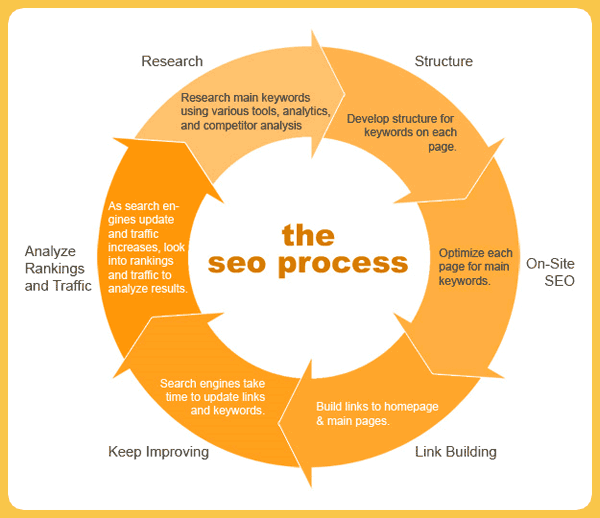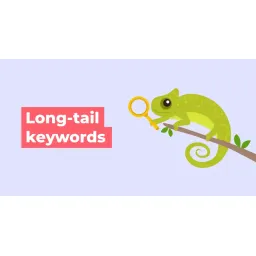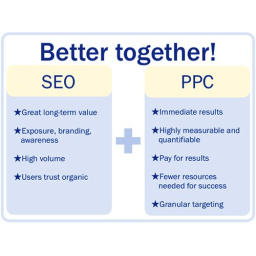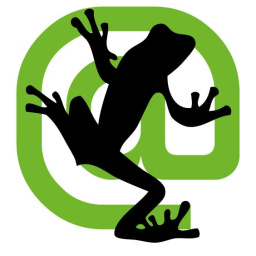Mastering SEO Content Creation
by Abbs
Posted on 2023-05-18 08:00:48

Composing Quality Content for SEO
When it concerns optimizing your website for online search engine, among the most important aspects is the quality of the content you publish. Quality content is not just essential for engaging your audience, but it can also help improve your search engine rankings.
In this chapter, we will discuss what makes content "top quality," and how to create content that interest both your audience and search engines.
TIP:Speed up your success with caching! Utilize browser caching to enhance user experience.
Understanding Quality Content
Quality content is content that is helpful, engaging, and valuable to your audience. This indicates that your content needs to provide your audience with the information they are searching for, in a format that is easy to understand and engaging.
When creating content for your website, it is essential to consider what your audience is searching for and what their discomfort points are. By dealing with these pain points and offering services, you can create content that is not only valuable to your audience however likewise helps to establish you as an authority in your industry.
Keyword Research
Before you begin creating content, it is necessary to carry out thorough keyword research. Keyword research is the process of determining the keywords and phrases your audience is searching for, and including those keywords into your content.

By integrating relevant keywords into your content, you can assist online search engine better understand what your content is about and improve your opportunities of ranking higher in search engine results pages (SERPs).
Creating Quality Content
When creating content, it is necessary to think about the list below elements:
Headings and Titles
The heading or title of your content is typically the first thing that your audience sees. As such, it is very important to create headings that are eye-catching and precisely show the content of your page.
Content Structure
The structure of your content can have a huge impact on its readability and SEO-friendliness. Make certain to separate your content into little, absorbable portions and utilize headers and subheaders to make it simple to scan.
TIP:Unlock the secret to higher rankings: Craft compelling meta titles and descriptions that entice clicks!
Keyword Usage
When integrating keywords into your content, ensure to utilize them in a natural, natural way. Stuffing your content with keywords can not only injure your search engine rankings but likewise switch off your audience.
Content Length
While there is no set rule for how long your content must be, in general, longer content tends to perform much better in search engine rankings. However, make sure that your content is engaging and offers worth, instead of simply focusing on length.
Visual Content
Visual content, such as images and videos, can help to break up your content and make it more engaging for your audience. Be sure to include relevant visual content in your pages where suitable.
Updating Your Content
Updating your content frequently can help keep it fresh and relevant. This can assist improve your online search engine rankings and keep your audience engaged.
Specifying Quality Content
Quality content is content that supplies worth to the reader. It's helpful, engaging, and well-written. Quality content can take numerous types, including post, short articles, videos, infographics, and more.
When creating quality content, it is essential to consider your target audience. What are their interests, discomfort points, and concerns? What information do they need to know to make educated choices? By understanding your audience, you can create content that resonates with them and supplies worth.
Writing for SEO
While creating quality content is essential, it's likewise important to optimize your content for search engines. Here are some tips for composing content that is both high-quality and SEO-friendly:
Conduct Keyword Research
Keyword research is the procedure of recognizing the keywords and expressions that your target audience is looking for. By including these keywords into your content, you can improve your opportunities of ranking well in online search engine results pages (SERPs).
When carrying out keyword research, search for keywords that have high search volume and low competitors. Use these keywords to optimize your content's title, headings, and body text. Nevertheless, do not overdo it - keyword stuffing can actually injure your SEO efforts.
Create Engaging Headings
Headlines are the first thing that readers see when they come across your content. A strong heading can get their attention and attract them to read more. Utilize your headline to interact the value of your content and pique the reader's interest.
Write Well-Structured Content
Well-structured content is simpler for readers to follow and for online search engine to understand. Use headings and subheadings to separate your content into sections, and utilize bullet points and numbered lists to make information simpler to absorb.
Include Internal Links
Internal linking is the procedure of linking to other pages on your website. This can assist online search engine much better understand the structure of your website and can also keep readers engaged on your site. Include relevant internal links within your content to provide readers with additional information on associated topics.
Include Visual Elements
Visual aspects, such as images, videos, and infographics, can make your content more engaging and assist separate big blocks of text. Be sure to optimize these aspects for search engines by utilizing descriptive file names and alt tags.
TIP:No broken hearts or broken links! Regularly check and fix broken links on your website.
Making Use Of Multimedia for SEO
In the digital age, multimedia has actually ended up being an essential part of creating engaging content for users. Multimedia can include images, videos, infographics, podcasts, and more. Not only does it add worth to your content, but it also assists with search engine optimization (SEO). In this chapter, we will discuss the value of utilizing multimedia for SEO and best practices for including it into your content.
Why Use Multimedia for SEO?
There are numerous reasons integrating multimedia into your content can benefit your SEO efforts:
-
Improved User Experience: Multimedia helps to make your content more engaging and interesting for users. This can lead to longer page views and reduced bounce rates, both of which are positive signals to search engines.
-
Increased Social Shares: Multimedia is highly shareable on social media platforms, which can increase the visibility and reach of your content.
![SEO Techniques]()
-
Enhanced Visibility in Search Results: Online search engine, such as Google, consider multimedia when ranking websites. This suggests that pages with multimedia are more likely to appear higher in search results.
-
Diversified Content: Including multimedia allows you to diversify your content and deal several methods for users to consume your content.
Best Practices for Using Multimedia for SEO
Now that we understand the significance of utilizing multimedia for SEO, let's discuss finest practices for integrating it into your content:
1. Optimize File Names and Alt Tags
When including multimedia to your content, it's essential to optimize the file names and alt tags. This helps search engines understand what the image or video is about and can improve its visibility in search results.
TIP:Mobile-first is the way to go! Ensure your website is fully responsive and mobile-friendly.
2. Compress Big File Sizes
Big file sizes can decrease your website's loading speed, which can adversely impact your SEO efforts. To prevent this, compress large file sizes before including them to your content.
3. Include Relevant Multimedia
When incorporating multimedia, it is essential to ensure that it relates to your content and includes worth to the user experience. Unimportant or low-quality multimedia can have an unfavorable influence on your SEO efforts.
4. Provide Context
Provide context for your multimedia by including captions or descriptions. This helps users understand the relevance of the multimedia and can improve its visibility in search results.
5. Use Video Transcripts
Records can assist online search engine understand the content of your video and improve its visibility in search results. In addition, records can improve the user experience for those who may have trouble hearing or comprehending the audio.
6. Make Use Of Schema Markup
Schema markup can assist online search engine understand the context of your multimedia and improve its visibility in search results page. Use schema markup for videos, images, and other multimedia to improve your possibilities of appearing in abundant search results.
TIP:Beat the bounce! Optimize your website for lower bounce rates with engaging content and intuitive design.
Integrating multimedia into your content can benefit your SEO efforts in a number of methods. By following these best practices, you can ensure that your multimedia is optimized for online search engine and supplies worth to your users.
Multimedia can play an important role in a website's seo (SEO) strategy. In this chapter, we will discuss how to successfully utilize multimedia content to improve your website's search rankings and overall user experience.
The Benefits of Multimedia in SEO
Multimedia content, such as images, videos, and infographics, can be used to enhance the user experience on your website. This can cause longer see times, lower bounce rates, and higher engagement levels, all of which can add to improved search rankings.
In addition, multimedia content can be optimized for search engines, supplying extra chances to rank for target keywords. For instance, images can be optimized with alt tags and filenames, while videos can be optimized with titles, descriptions, and tags.
Finally, multimedia content can be shared and connected to, providing extra backlinks to your website, which can also help improve search rankings.
Selecting the Right Multimedia Content
When choosing what kinds of multimedia content to use on your website, it is important to consider your target audience and the types of content that will interest them. For example, if your target audience is primarily visual learners, infographics and videos may be particularly effective.
It is likewise important to think about the function of the content. Will it be utilized to show a point, provide additional information, or just add visual interest? Comprehending the function of the content will help you choose the most suitable format.
Optimizing Multimedia Content for SEO
As soon as you have actually picked your multimedia content, it is essential to optimize it for search engines. Here are some tips for doing so:
Images
- Use descriptive filenames that include target keywords
- Optimize the alt tags with target keywords
- Compress images to decrease load times
Videos
- Usage descriptive titles and descriptions that include target keywords
- Use tags to assist classify and promote the video
- Optimize the video file size to minimize load times
Infographics
- Usage detailed filenames that include target keywords
- Include text within the infographic to provide context and improve ease of access
- Provide an embed code to motivate sharing and linking
Carrying Out a Content Audit
Among the keys to effective SEO is having top quality content on your website that is optimized for search engines. Nevertheless, over time, the content on your website can become outdated, unimportant, or just not carrying out in addition to you 'd like. This is where a content audit can be extremely useful.
A content audit is the procedure of examining and assessing all of the content on your website to identify what is working, what is not, and what can be improved. By conducting a content audit, you can identify chances to improve your website's SEO and user experience, which can ultimately cause better rankings and more traffic.
Why Conduct a Content Audit?
There are several reasons you ought to think about carrying out a content audit:
-
Improve SEO: A content audit can help you identify content that is not performing well in online search engine and needs to be upgraded or gotten rid of.
-
Identify Gaps: By examining your content, you can identify gaps in your content strategy and create brand-new content to fill those gaps.
-
Optimize User Experience: A content audit can help you identify content that is challenging to navigate or understand, and make improvements to boost the user experience.
-
Get Rid Of Duplicate Content: Replicate content can hurt your website's SEO, and a content audit can help you identify and get rid of duplicate content.
Actions to Carrying Out a Content Audit
-
Create a Spreadsheet: Create a spreadsheet to track all of your website's content, including page URLs, page titles, meta descriptions, word count, and any other relevant information.
-
Categorize Your Content: Classify your content into different topics or themes to make it simpler to analyze.
-
Evaluate Performance: Usage tools like Google Analytics to evaluate the performance of each piece of content, including page views, bounce rates, and time on page.
-
Identify Outdated Content: Identify content that is obsoleted, unimportant, or not carrying out well in search engines.
-
Identify Action Strategy: Decide what action requires to be considered each piece of content. Should it be updated, deleted, or combined with other content?
-
Focus On Updates: Focus on content updates based on the impact it will have on SEO and user experience.
-
Carry Out Changes: Make the essential changes to your website's content based on your analysis and action plan.
Tips for Conducting a Successful Content Audit
-
Set Goals: Define what you want to attain with your content audit, such as improving search engine rankings or enhancing the user experience.
-
Include Others: Include other members of your team in the content audit process to get different point of views and insights.
-
Stay Organized: Keep your spreadsheet and analysis organized and updated to ensure accuracy and efficiency.
-
Be Thorough: Evaluate all of your website's content, including blog posts, landing pages, product pages, and other pages.
-
Update Regularly: Conduct content audits regularly to ensure that your website's content is always updated and optimized for search engines.
By conducting a content audit, you can identify chances to improve your website's SEO and user experience, which can eventually result in much better rankings and more traffic. Make the effort to evaluate your website's content and make the required modifications to remain ahead of the competitors.
Conclusion
A content audit is a valuable tool for improving your website's SEO and user experience. By examining all of your website's content and recognizing opportunities for improvement, you can make the required changes to enhance your website's performance in online search engine and provide a better user experience for your audience. Remember to conduct routine content audits to remain on top of your website's content and ensure that it is constantly updated and optimized for online search engine.
Incorporating multimedia content into your website can provide a number of advantages for SEO, including enhanced user experience, extra ranking chances, and more backlinks. By choosing the best types of multimedia content and optimizing them for search engines, you can maximize the impact of your SEO efforts.
Creating premium content is essential for SEO success. By understanding what makes content "premium," performing thorough keyword research, and focusing on factors such as headlines, content structure, keyword use, content length, visual content, and upgrading your content, you can create content that interest both your audience and search engines.
 What Are Long-Tail Keywords and Why Should You Utilize Them?
In the ever-evolving world of Seo (SEO
What Are Long-Tail Keywords and Why Should You Utilize Them?
In the ever-evolving world of Seo (SEO
 Making Use Of Paid Advertising for SEO
While organic search traffic is essential for any website, i
Making Use Of Paid Advertising for SEO
While organic search traffic is essential for any website, i
 Using Influencer Marketing for SEO
Influencer marketing has actually become a popular strategy for
Using Influencer Marketing for SEO
Influencer marketing has actually become a popular strategy for



